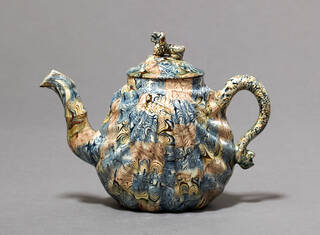Ceramicist Michelle Erickson's contemporary work uses lost ceramic techniques to create historical narratives about political, social, and environmental issues – both past and present. Regardless of time frame, her works provide insightful commentary on the universal character of the human spirit.

During her residency at the V&A in 2012, Erickson recreated an 18th-century agateware teapot from our collection. Agateware uses different coloured clays to create a pattern that imitates the layered qualities of agate stone.
Watch as Erickson experiments with how the object was originally made. From measuring the existing teapot and preparing layers of clay, to firing and glazing, this process requires great skill and attention to detail.
See how more objects were made on our YouTube channel.

